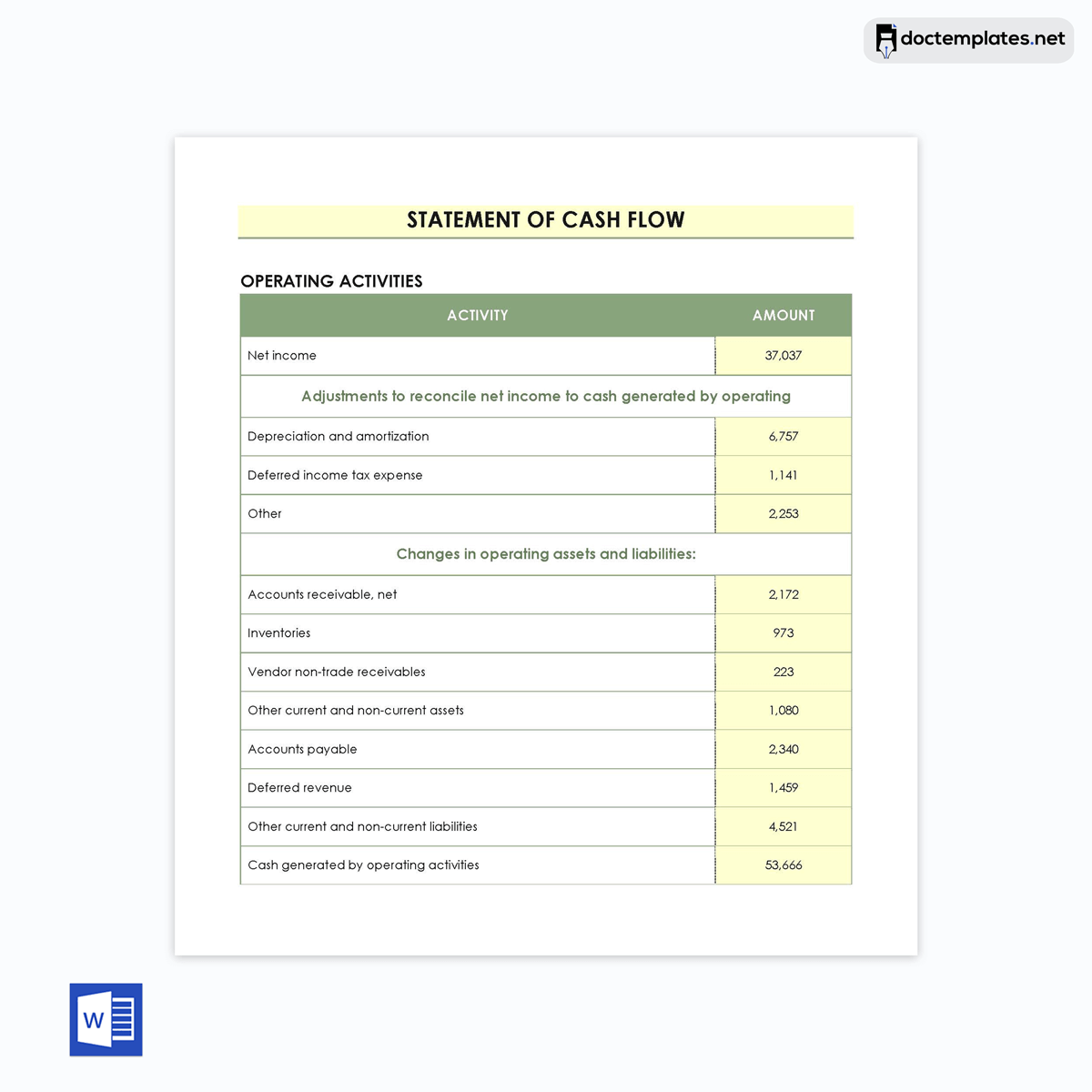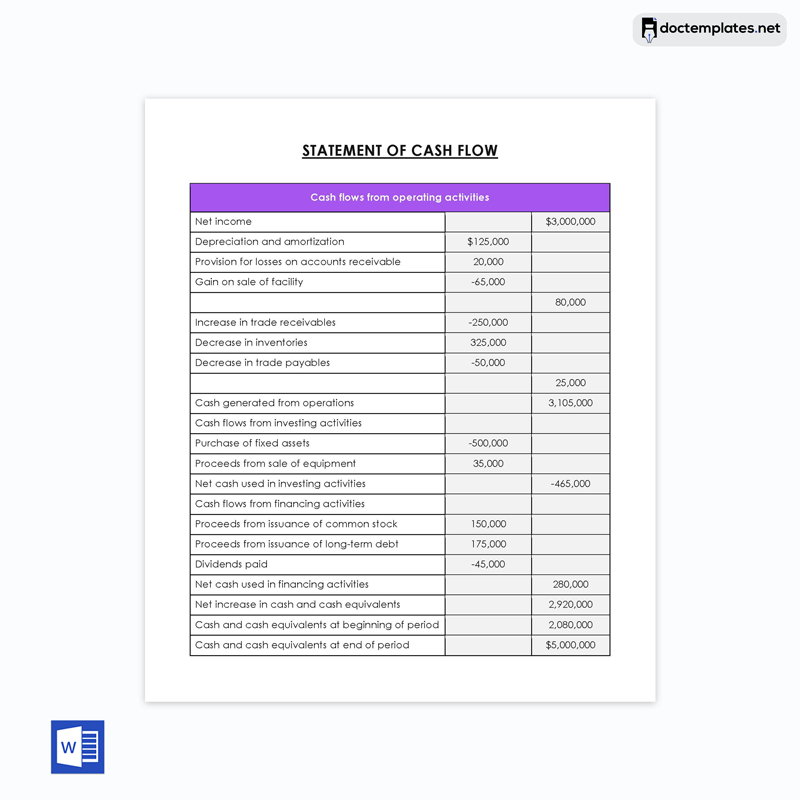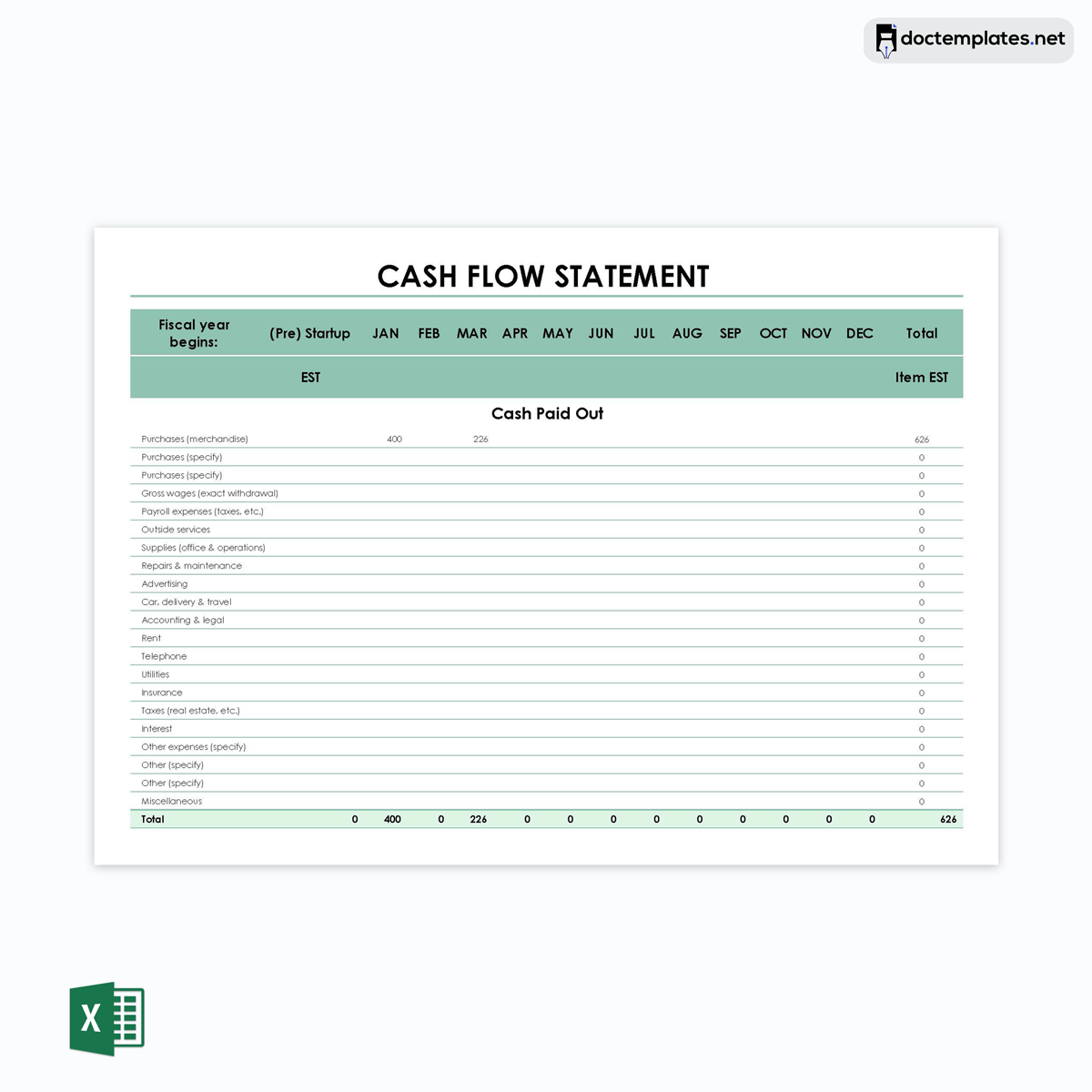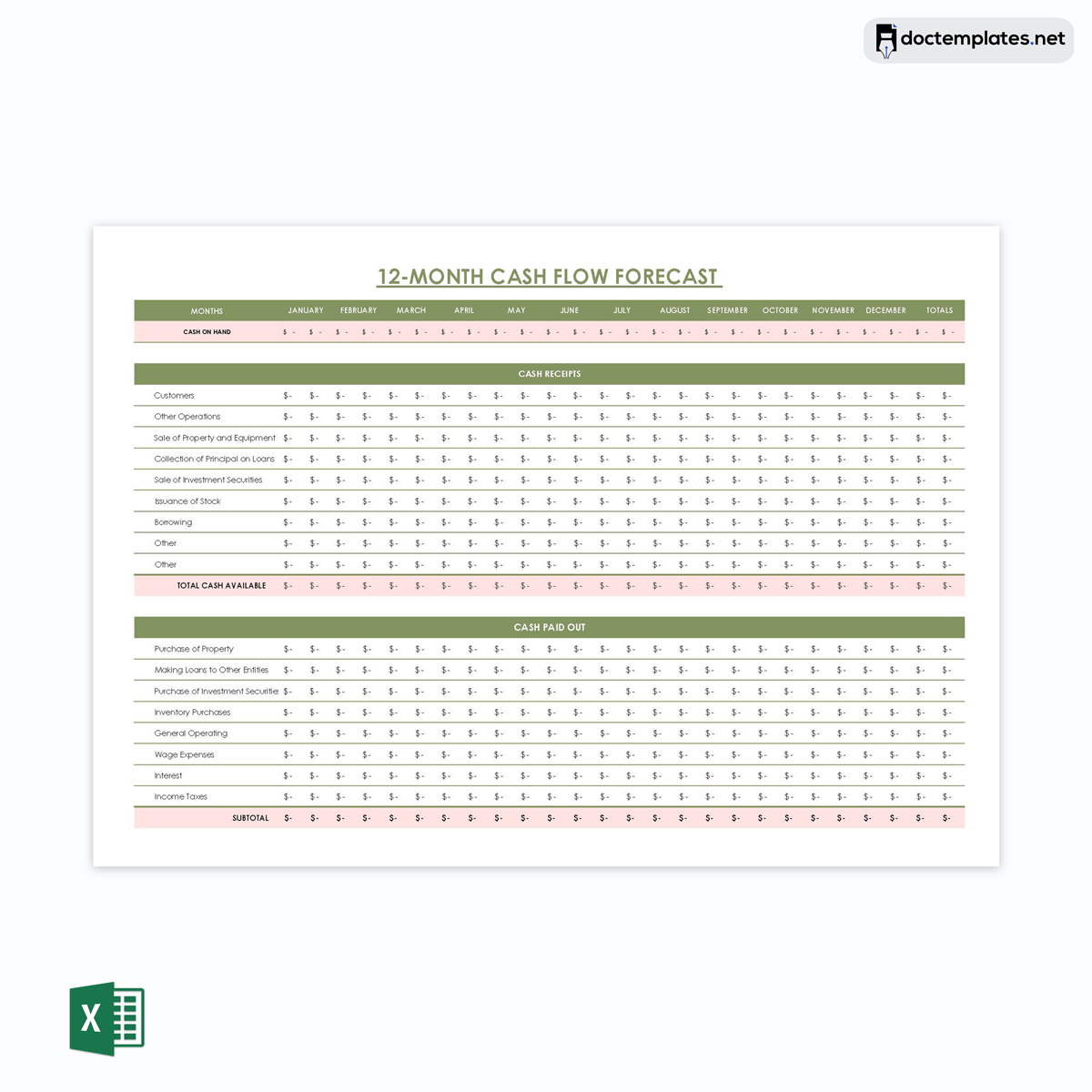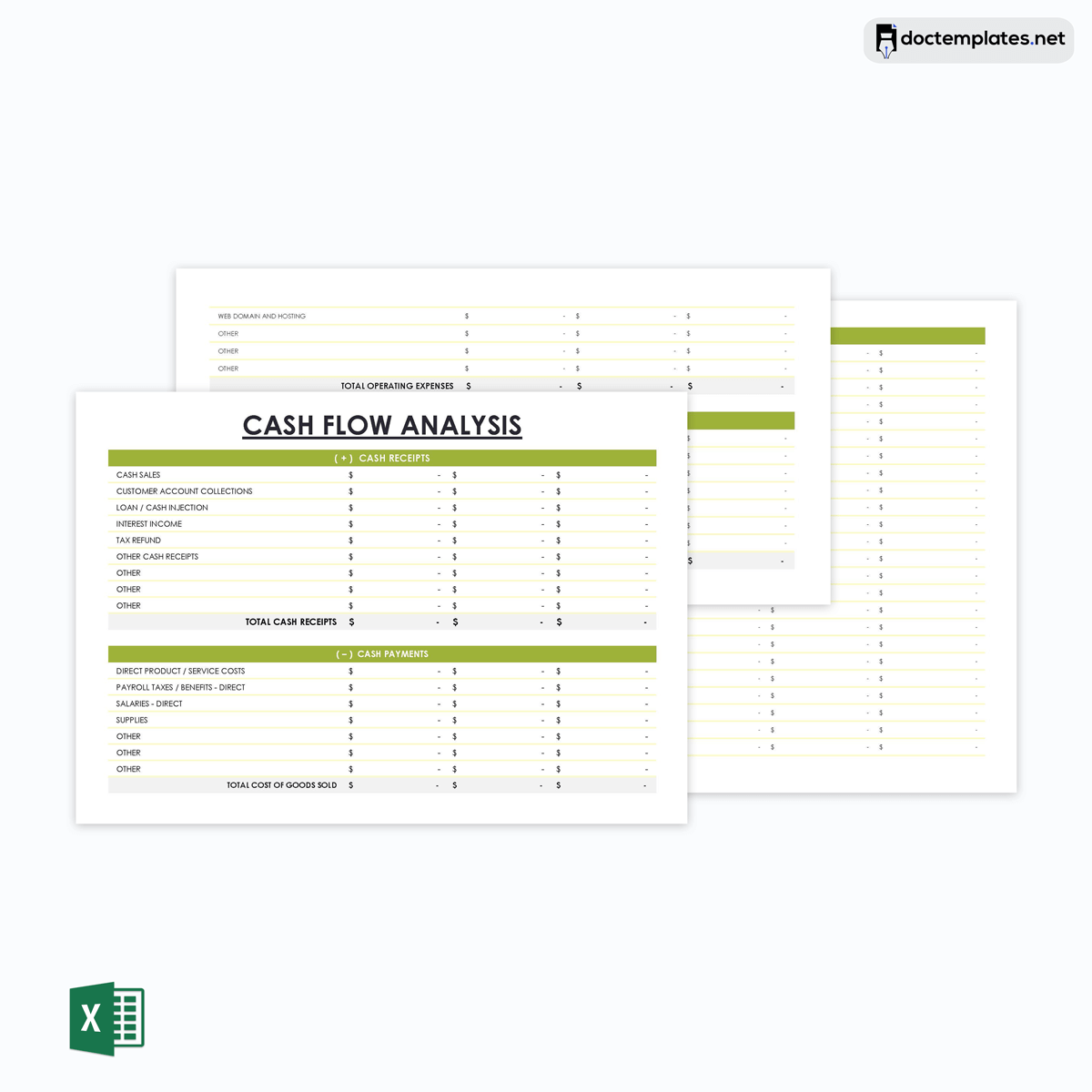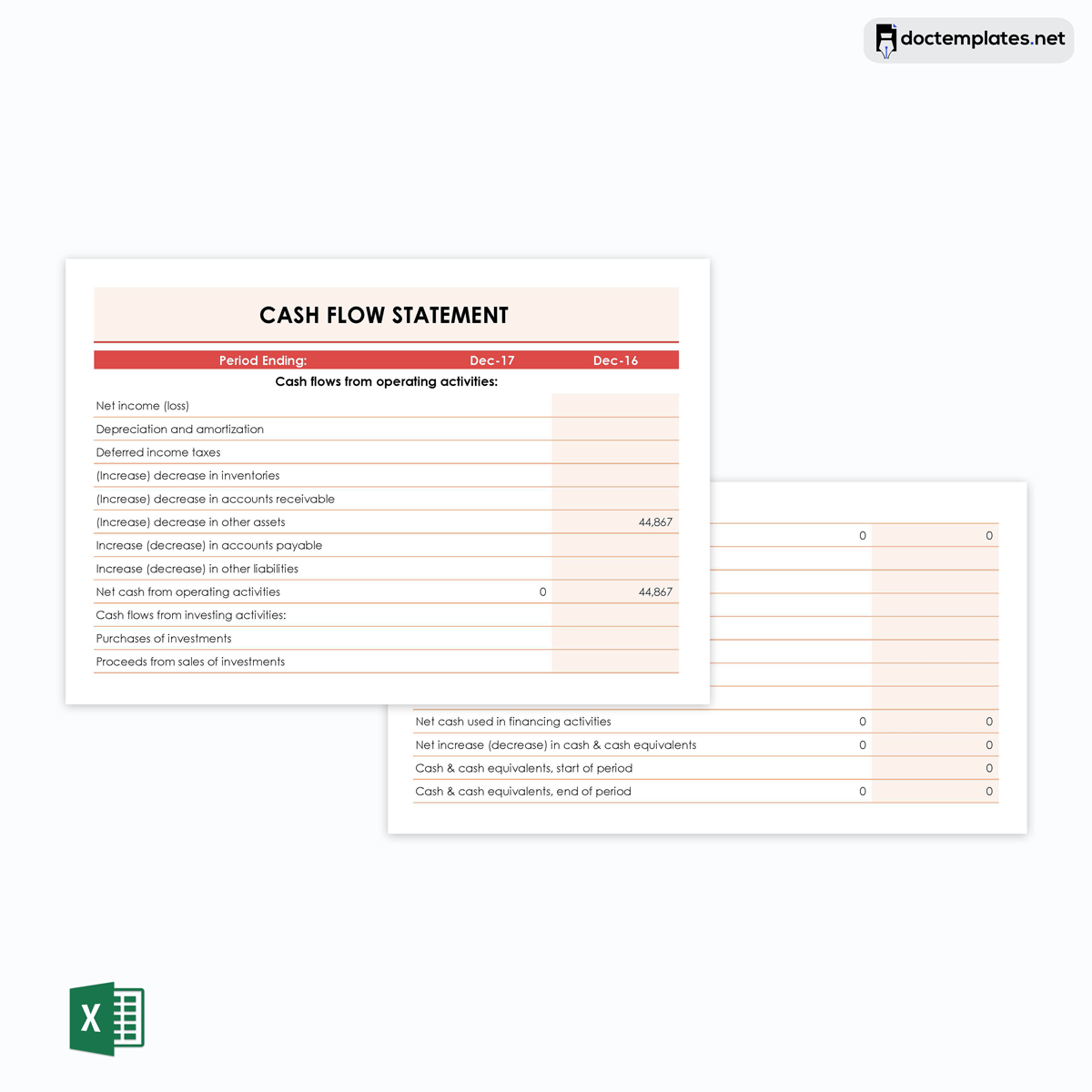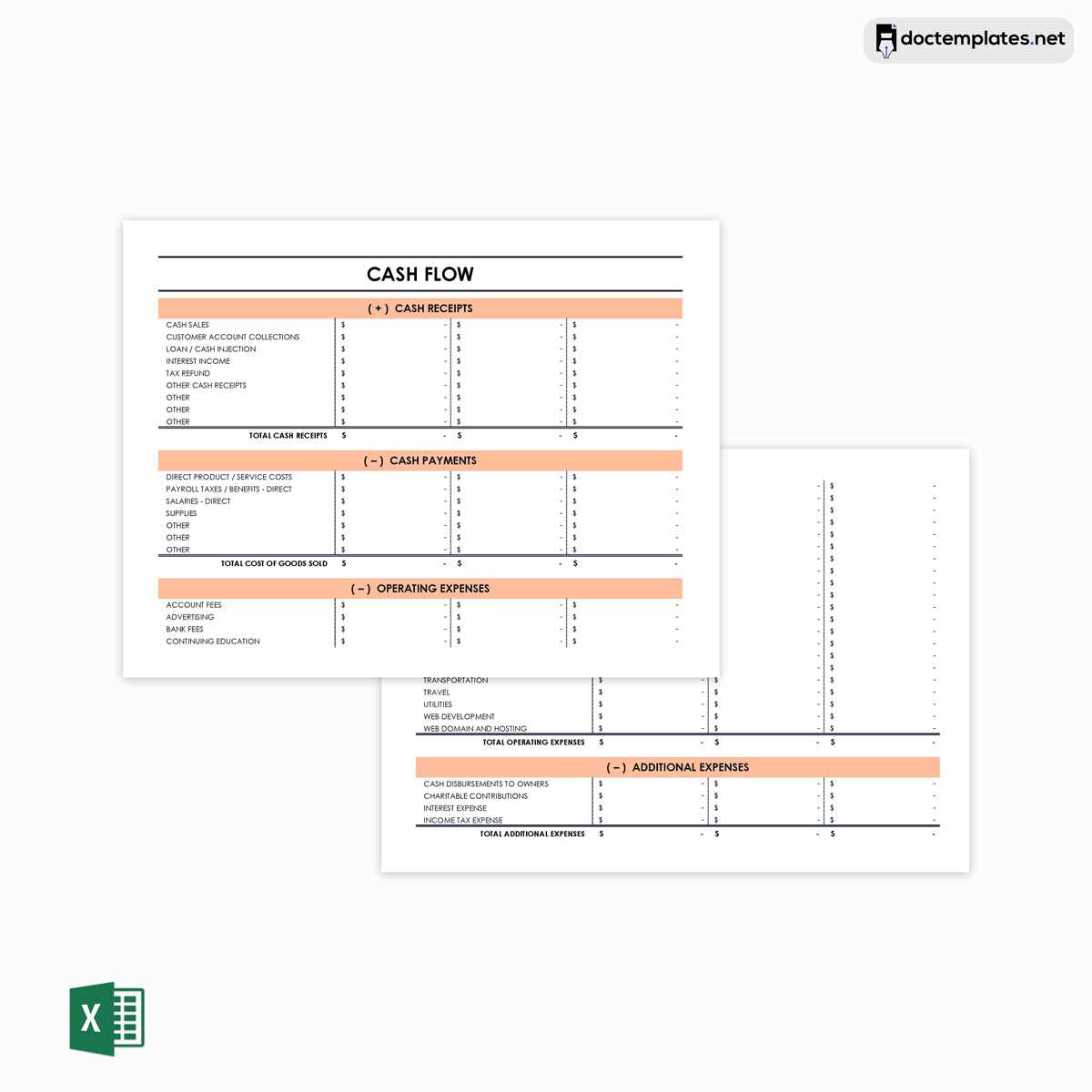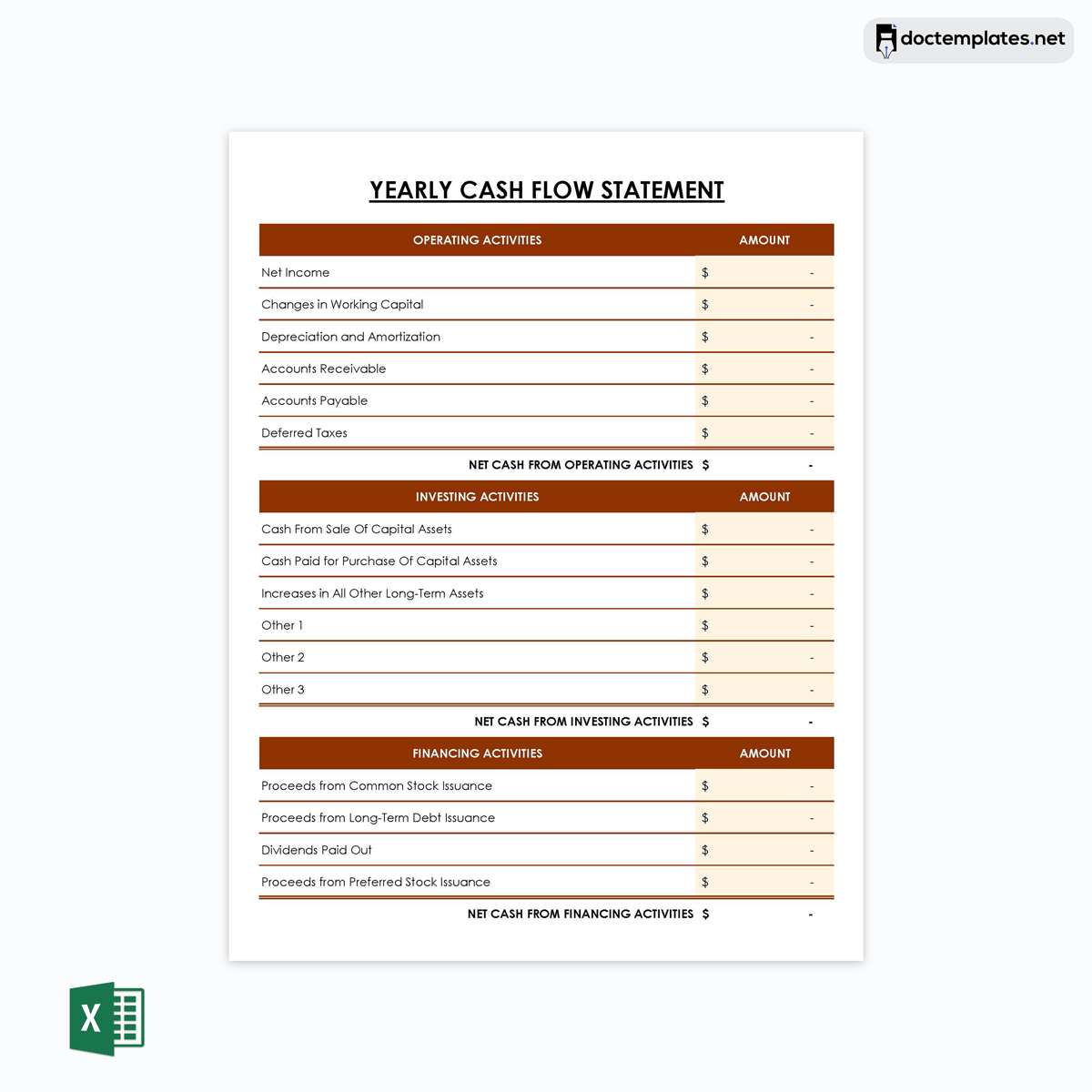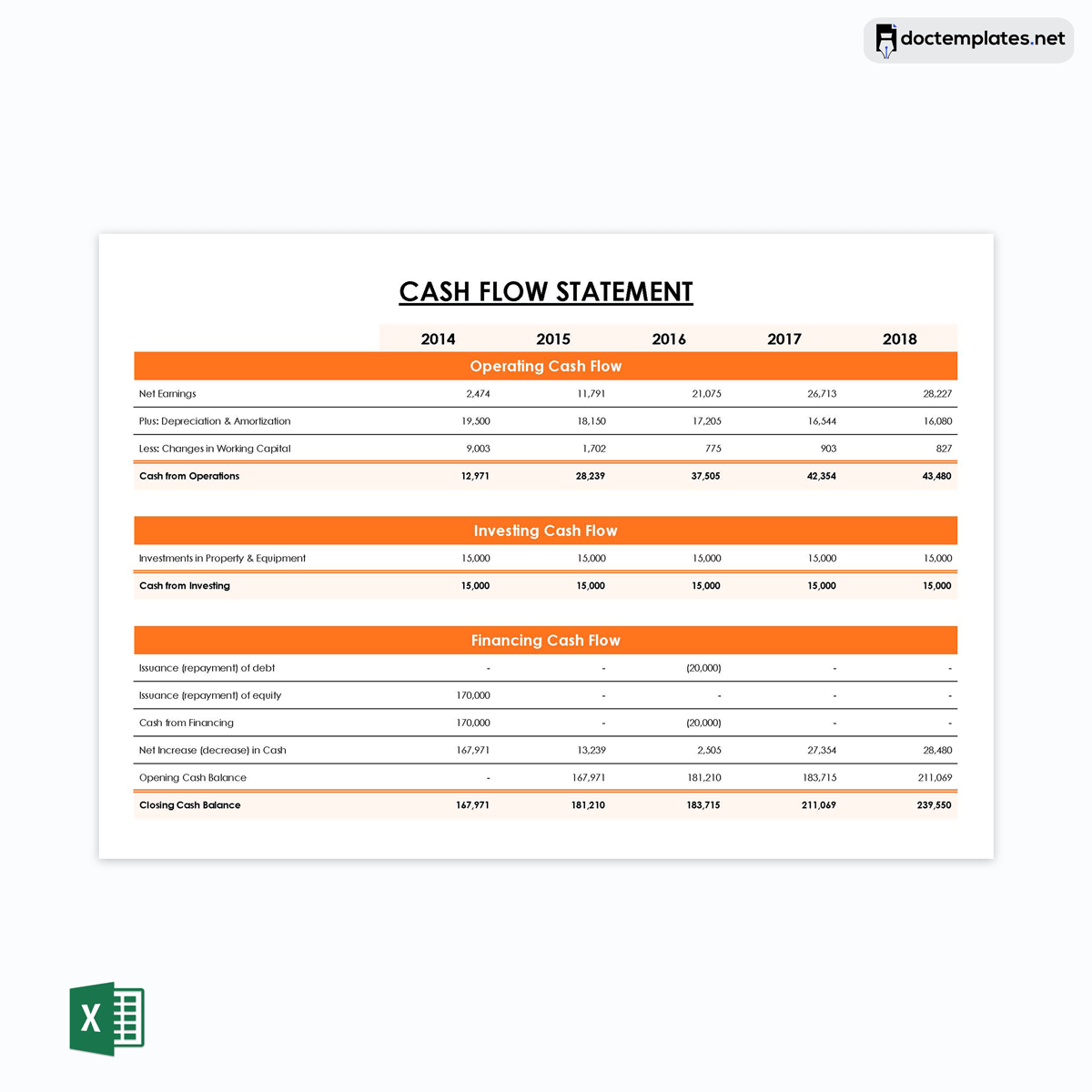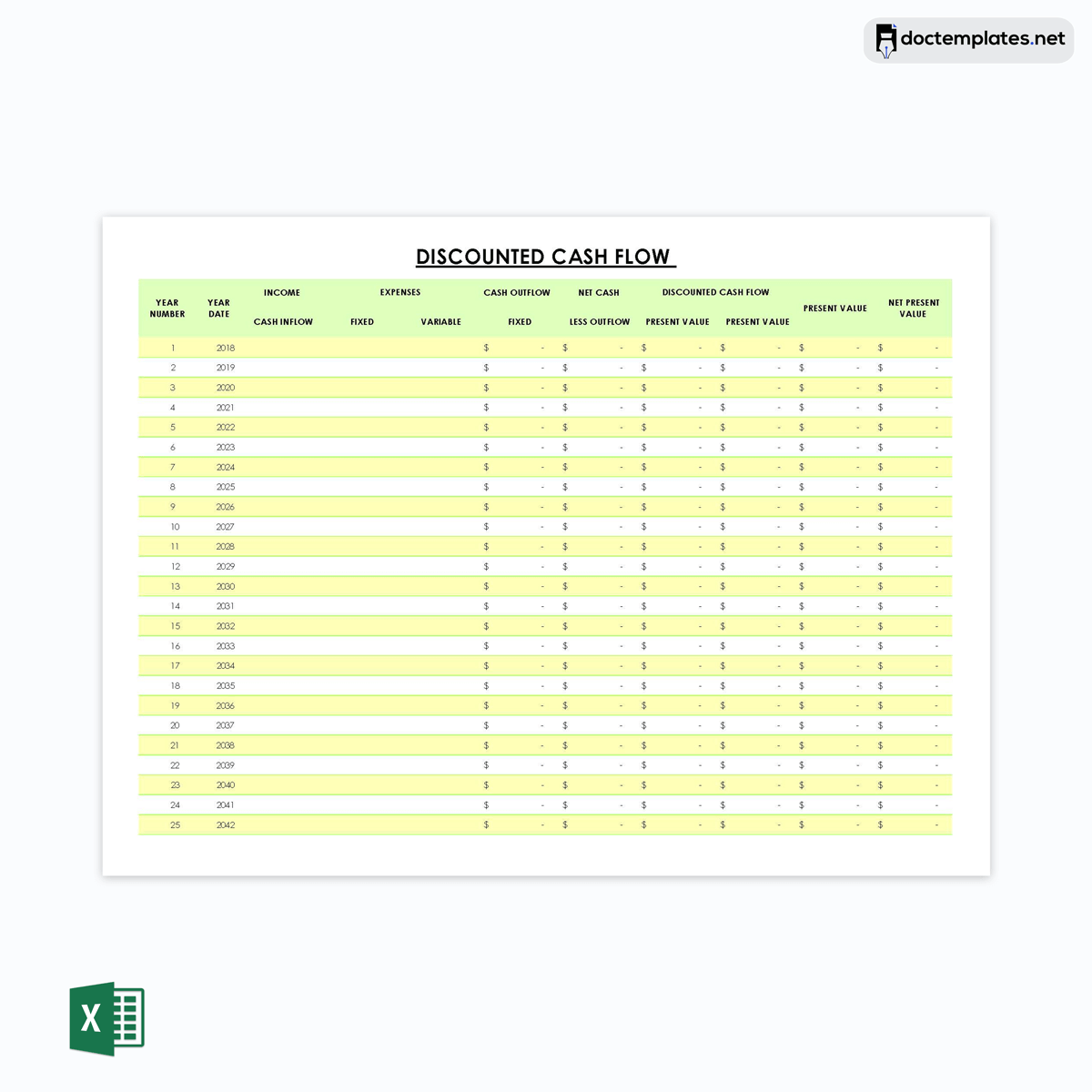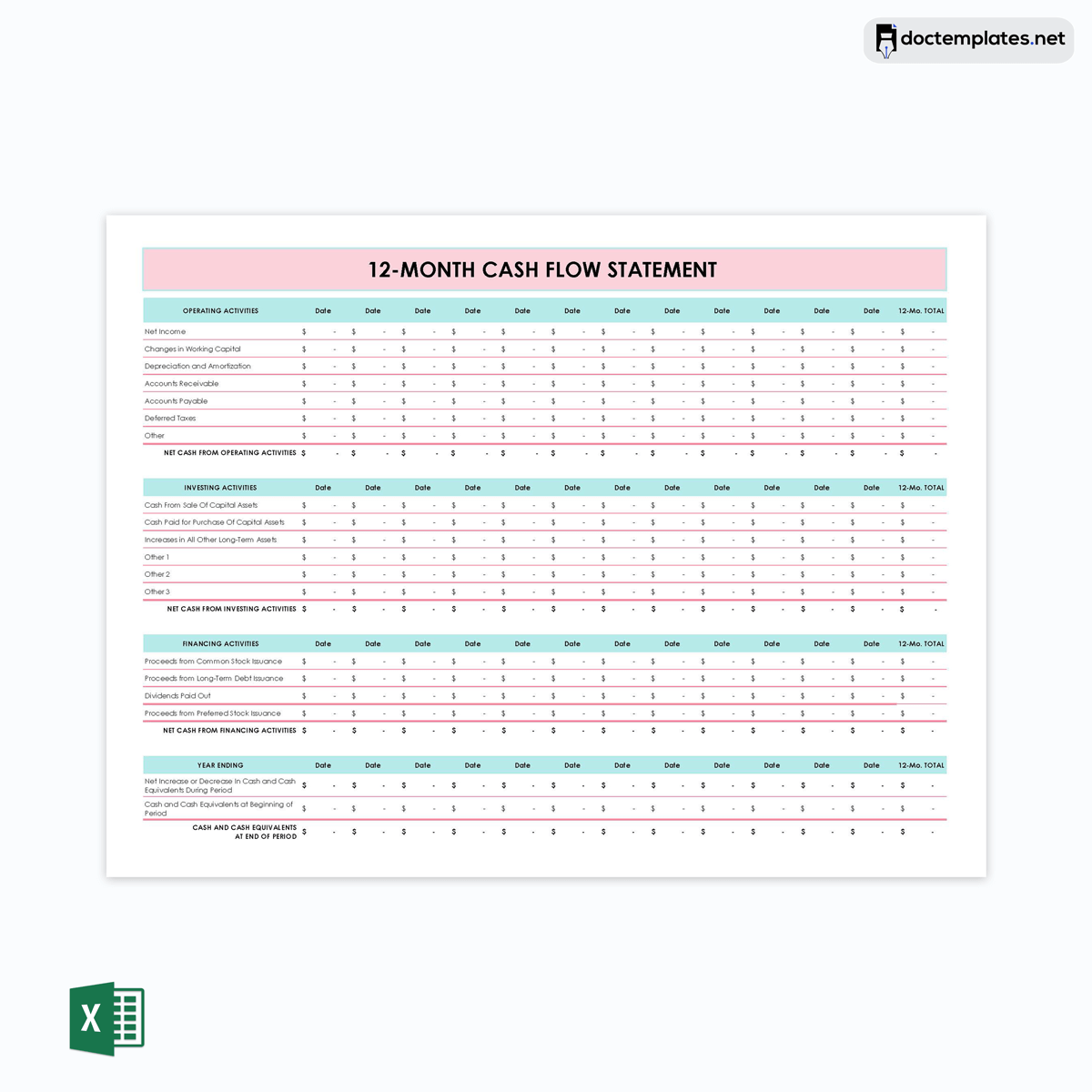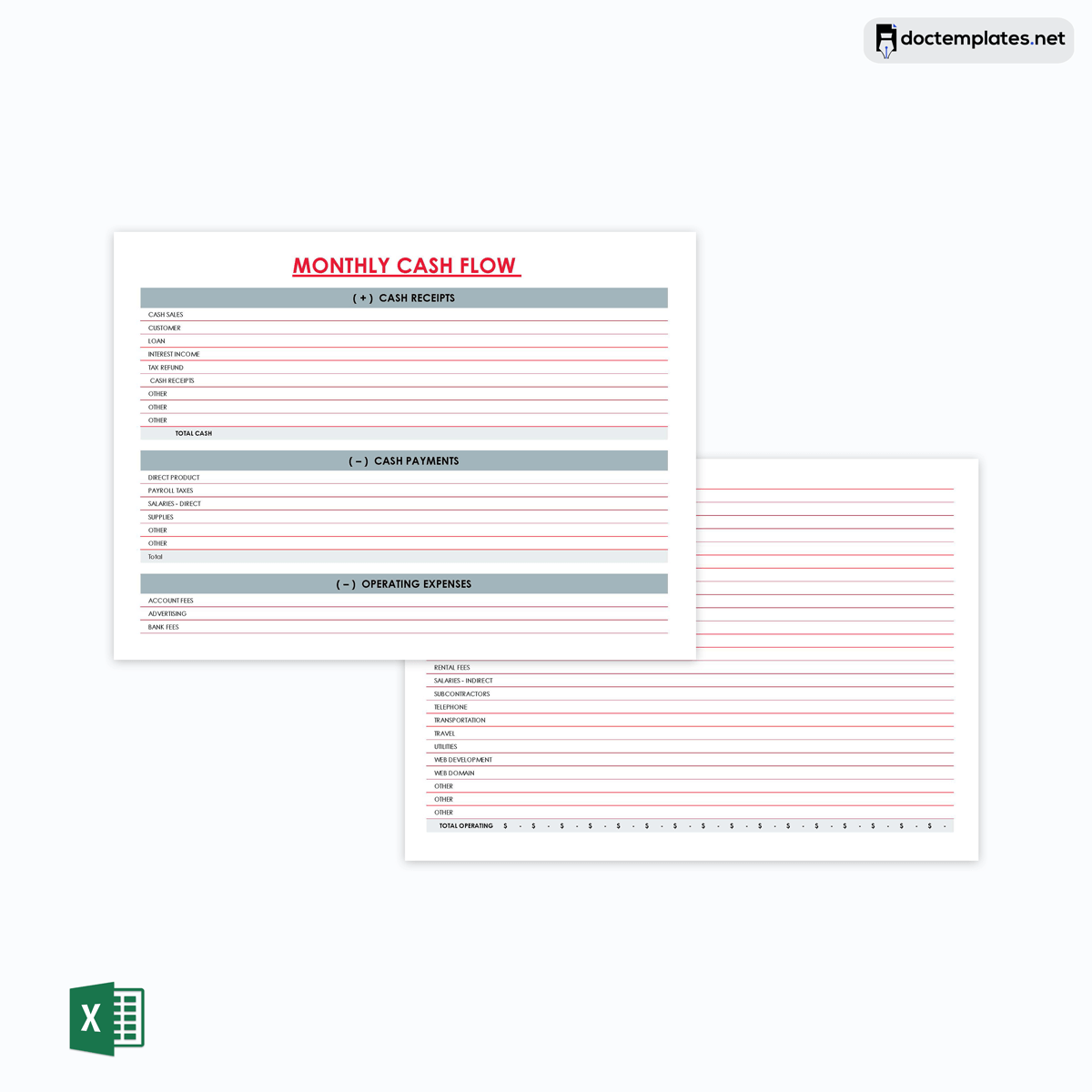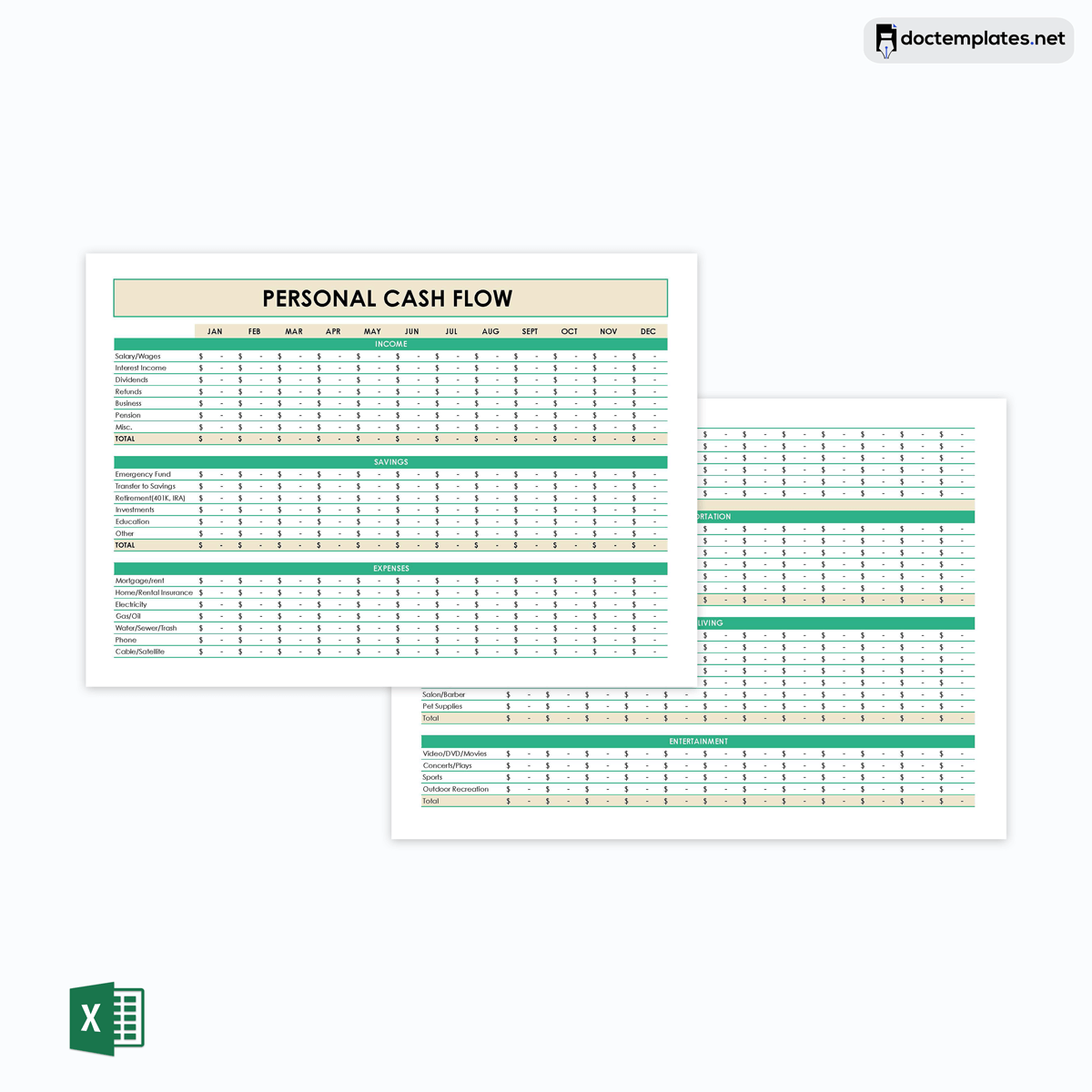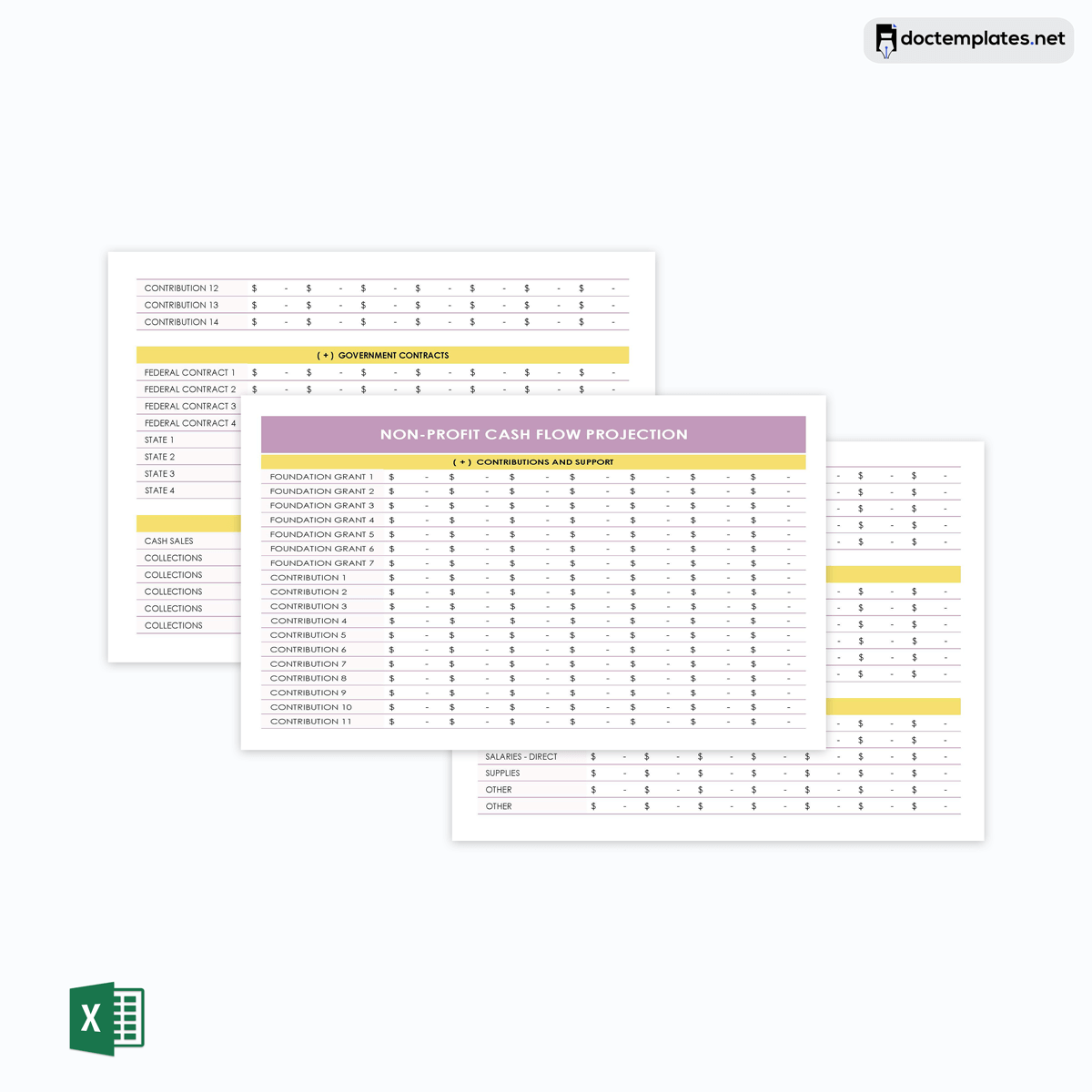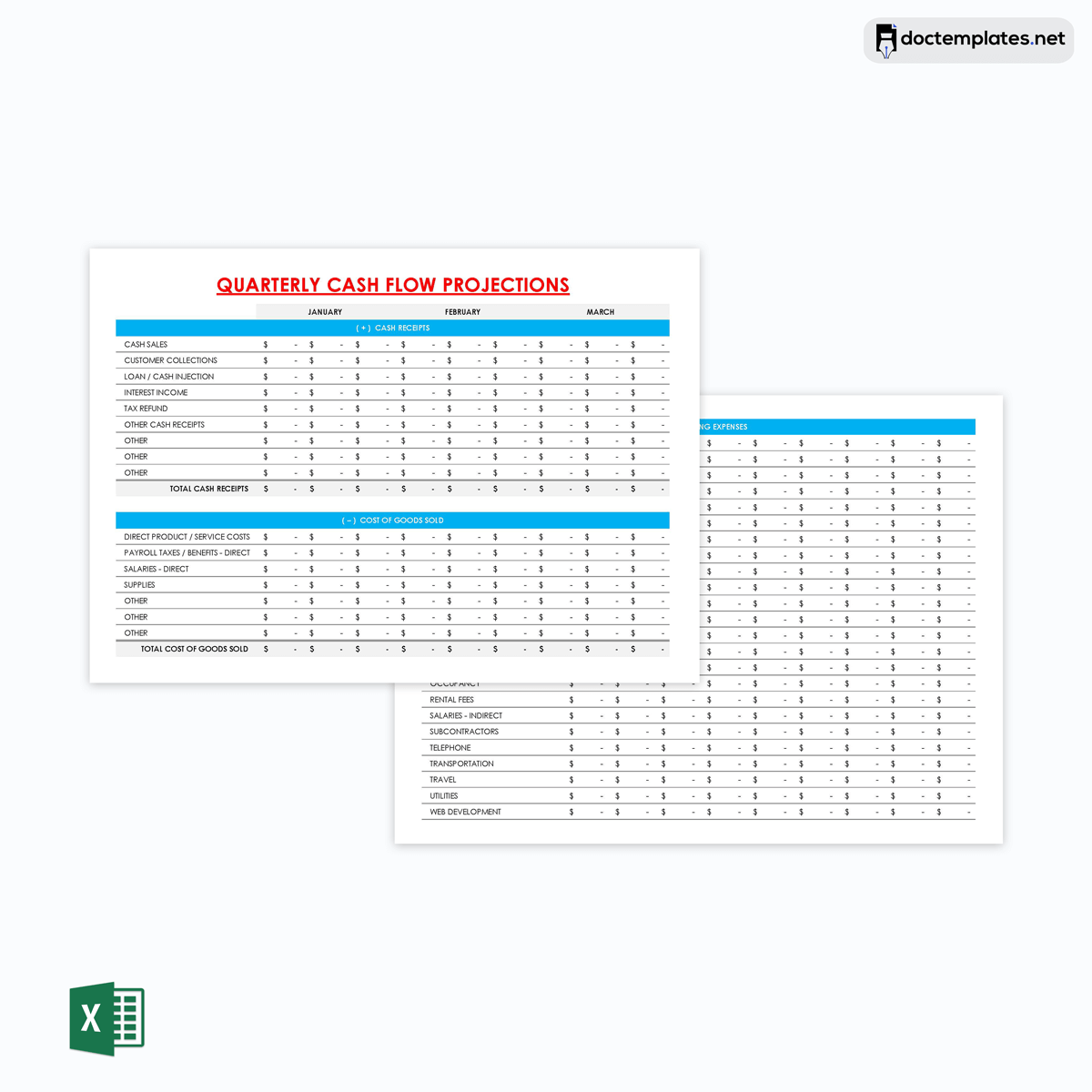The cash flow statement (CFS) is a financial document that outlines the company’s financial operations and explains how money flows in and out of the company.
Basically, this financial statement reviews the flow of cash and cash equivalents and displays the company’s financial state. Therefore, the statement explains how the company pays its debts and finances its operations.
The cash flow statement highlights the amount generated and spent over a specific period, that is, monthly, quarterly, or annually. It allows creditors, suppliers, and other investors to determine the liquidity of the business and its ability to clear its arrears and sustain its operations. Additionally, it allows potential investors to make informed and accurate investment decisions based on the company’s financial status.
Normally, it cash flow from investments, financing operations, and operating activities. There are two types of cash flow statements; a negative cash flow, where your statement shows a negative number; which means that you lost money during the accounting process, and a positive cash flow, where you get a positive number at the end of an accounting period.
In this article, we are going to discuss the following:
- Why a cash flow statement is important for your business.
- How to create a cash flow statement and calculate cash flow.
- Limitations of a cash flow statement.
Free pre-built templates for cash flow statements have also been provided to assist in the process of making it. These templates will save you time and ensure you create an accurate cash flow statement.
Download Free Templates
Given below are the cash flow statement templates that you can download for free:
Why do you Need Cash Flow Statement?
A statement of cash flow is essential to any company. It allows a businessman to understand their financial situation by providing an in-depth analysis of the earnings and expenditures.
Here are reasons why a businessman needs it:
- The cash flow statement shows if the business is losing money from its operations or through taking lots of debts. The statement will provide a clear explanation of how the available money is spent.
- The statement allows potential investors to understand how money moves in and out of business. This statement gives them a clear picture of how the business handles its finances and whether their investment will yield the desired profit.
- The statement allows a businessman to compare cash from operating activities and the business’s net income. The company is said to have a high quality if the money from operating activities is higher than the company’s total earnings.
- It also enables a businessman to measure their company’s performance. The cash flow statement allows them to see the change in cash outflows, inflows, and available cash.
- The statement of cash flow shows the company’s liquidity. This highlights how much operational funds the business has to conduct all the necessary operations smoothly.
- The statement allows a businessman to create a cash flow projection. This projection will help them predict the future cash flow for the company. This is essential as it allows them to make attainable and long-term business and financial plans.
Thus, a cash flow statement is essential as it lets you track all your finances. A premade cash flow statement template can help you create an accurate cash flow statement. It will also save you time and energy.
Two Methods to Calculate the Cash Flow
There are two distinct methods you can use to determine your company’s cash flow; the direct method or the indirect method. In most cases, both methods are suitable for small businesses.
Below are the two methods used in the statement to calculate the cash flow:
Direct method
You must record your company’s transactions in real-time for this method. Therefore, you will have to record the cash movement in and out of your business after every transaction. You can use this information to create a cash flow statement at the end of the month based on the transactions made.
In most cases, this method requires you to sum up every payment made from the business account; this includes salaries, paying suppliers, and other cash payouts over a certain period of time. This method is suitable for companies familiar with the cash basis accounting technique.
Indirect method
The indirect method allows you to retrace the movement of money in and out of business using your income statement. Using this method, you can analyze the documented transactions and reverse some of them to gain the funds needed to sustain the company’s operations.
This approach allows you to adjust your net earnings by calculating your cash flow. You can do this by subtracting or adding the difference you get from all your non-cash business deals. The non-cash transactions will cause an increase or decrease in the company’s assets and liabilities. Therefore, adding or subtracting these non-cash transactions from your net income will give you an accurate cash flow figure.
Although the direct method is simple and can be easily understood, it also takes a lot of time since it involves taking account of each and every transaction that happened during the reporting period. That is why most businesses prefer the indirect method, which is faster. In addition, the indirect method is also linked to the balance sheet.
Remember that both the direct and indirect methods are approved by GAAP (Generally Accepted Accounting Principles) and IFRS (International Financing Reporting Standards).
How to Create a Cash Flow Statement
A cash flow statement is crucial to your business as it allows you to keep track of your finances and maintain smooth business operations.
Therefore, there are several things to consider when creating a statement of cash flow:
Determine the starting balance
First, you must establish and determine the cash balance and other available cash equivalents before creating a report. You can check your company’s income statement for the specified accounting period to know the starting balance.
In addition, the starting cash balance is required when using the indirect method to calculate cash flow from operating activities. However, the direct method does not require the starting cash balance.
The starting balance can be the cash available at hand or cash equivalents like short-term investments, bank deposits, and assets that can be converted for money. It is crucial to know your starting balance as it gives you a clear financial blueprint on how to conduct your business operations.
Calculate cash flow from operating activities
Operating activities are income-generating activities that do not require investing or financing from the company.
For example:
If you own a juice shop, this is the cash you spend on buying the ingredients and paying for labor.
Cash flow from operating activities originates from assets, purchases, liabilities, and other business-related expenses. You can use a direct or indirect presentation method to present the cash flow from operating activities.
For direct presentation, you create a list of cash flows which may include revenue from sales and capital outflows. For indirect presentation, cash flows from operating activities are described and derived from the company’s profits. In most cases, indirect presentation outlines the reasons why the profit differs from the cash flow.
Calculate cash flow from investing activities
Investing activities include money generated or used from the company’s investments. These investments may include selling or purchasing assets and equipment, receiving and paying loans, and making other necessary sales and purchases using the company’s money. Investing activities ensure that most of your money is used to purchase assets whose value will appreciate.
Note that the funds used to facilitate these investing activities should be free cash and not debts. Therefore, using debts to make significant investments can lead to future financial strains for your business. In other words, cash flow from investing activities is the money cashed out after purchasing short-term assets, equipment, or buildings, while cash flow from diverting activities is the money cashed in after selling an asset.
Cash flow from investing activities involves reversing the investments since you will use the cash on hand. Although these investments have cash value, they are not the same as cash. This is because the value of cash is usually currency.
Finally, these investing activities will not significantly contribute to the company’s cash flow; small businesses should still reconcile them as they affect their working capital.
Calculate cash flow from financing activities
Financing activities are business transactions that result in a change in your company’s equity capital. Therefore, cash flow from financing activities is the money acquired from bank loans or used to pay bank debts. Also, it can be the money earned after selling company shares or the money used to buy back shares. Taking dividends is also considered a financing cash flow activity.
Basically, cash flow from financing activities includes transactions that result in an increase or a decrease in the finances of your company. Capital can either be raised or not. When the capital is raised, the changes in cash are considered to be cash-in. On the other hand, when dividends are paid, these changes in cash are considered to be cash-out. For instance, if the company issues shares to the public, this is a cash-in. However, when the company pays the shareholders their interest, this becomes a cash-out.
Important Note: Keep in mind that interest is still considered an operating activity, not a financing activity, even though it is a cash-out expense.
Determine the ending balance
You can easily determine your ending balance once you know the cash flow details from operating, investing, and financing activities. These details will allow you to know how much cash and cash equivalents you have at the end of the cash flow calculations. Note that a positive ending balance shows that your business gained more funds than you spent. A negative balance shows that you spent more than you gained in the period.
Note that the cash flow from operating, financing, and investing activities will be the same as the balance reflected at the end of the reporting period. The ending balance will accurately depict the earnings made and the amount lost during the specified reporting period.
Cash Flow Statement V/S Income Statement V/S Balance Sheet
The cash flow statement allows you to measure and understand your business’s financial status and performance. The statement gives you an overall view of your company’s cash flow, that is, the inflow and outflow of cash that comes from financing activities, operating activities, and investing activities over a period of time.
The income statement shows the amount gained (revenues) and lost (expenses) over a certain period of time. It explains the gains made from certain company assets, along with the expenses and losses incurred before the asset’s value depreciated. It is all about understanding the company’s profitability.
A balance sheet indicates the financial balances of your business. Therefore, the balances indicated in the balance sheet should equal the net change in the cash flow statement. This financial document shows the company’s assets, liabilities, and equity at a specific time. This means that it indicates the financial standing and ability of the company during that point in time.
Note: Keep in mind that cash is not the same as net income. Net income on the income statement includes both cash sales and sales made on credit. Also, the cash flow statement is different from the income statement and the balance sheet because it does not entail the revenue (future incoming amount) and expenses (future outgoing cash).
Limitations of Cash Flow Statement
The cash flow statement may be critical to your company’s financial sustenance and stability, but it has its disadvantages.
These disadvantages include the following:
- Without proper knowledge and in-depth analysis, it is easy for you to misjudge and perceive a negative cash flow statement as a financial threat to your business. With inaccurate information, you are likely to make uninformed decisions that may affect your business operations.
- The financial changes depicted in the cash flow statement can be used by potential investors to gauge the financial performance of your company and predict if their investments will bring the expected returns. Therefore, a poorly constructed cash flow statement can discourage investors who may perceive your company to be near ruin and liquidation.
- The cash flow statement may fail to display the actual net revenue of your company. Note that the statement only presents cash recordings of a specific period. Additionally, upon its calculation, the statement may fail to integrate other non-cash assets owned by your company.
Frequently Asked Questions
Is the indirect method of cash flow statement better than the direct method?
The indirect method of cash flow statement is better than the direct method since it offers you a chance to reconcile the items on the balance sheet to the net income on the income statement. That means you can recognize all the changes caused by non-cash transactions, that is, increases and decreases.
Since you will be able to establish how the accounts on the balance sheet affect the net income on the income statement, the indirect method is the best way for you to properly understand not only your cash flow statement but also other financial statements. As a businessman, however, you can use either the direct or indirect method.
What is included in cash and cash equivalents?
The cash and cash equivalents provide details of the value of your business’s assets, especially those that are cash or can be converted into cash within 90 days or less. Cash and cash equivalents include petty cash, currency, short-term investments, bank accounts, highly liquid, short-term government bonds (those with three months or less maturity period), treasury bills, and commercial paper.
How to track cash flow using the indirect method?
There are four rules that you should follow if you wish to easily track cash flow using the indirect method: All transactions that indicate an increase in assets mean a decrease in cash flow, while those that indicate a decrease in assets represent an increase in cash flow. For transactions with an increase in liabilities, the resulting effect is an increase in cash flow. Finally, transactions that indicate a decrease in liabilities cause a decrease in cash flow.
Why use a cash flow statement template?
Since the cash flow statement is important in determining how cash flows in and out of your business, you need to ensure that you have a proper and consistent document. That is why; it is important to use a cash flow statement template. A template helps you to save time with its premade sections and ensures that your document is accurate and professional. It also makes it effortless to prepare your cash flow statement.
